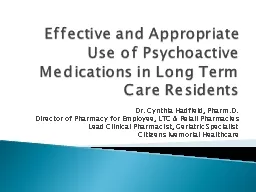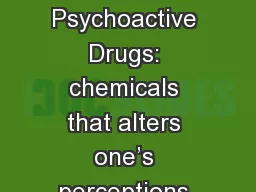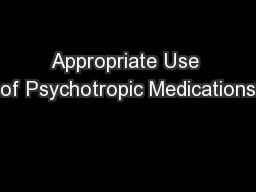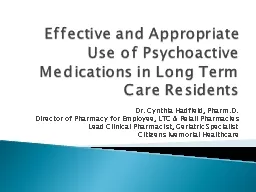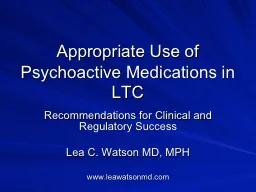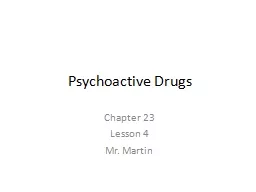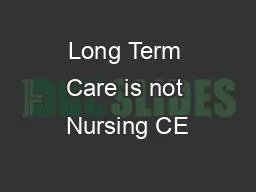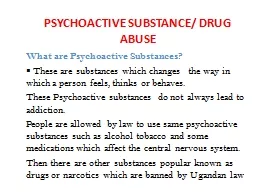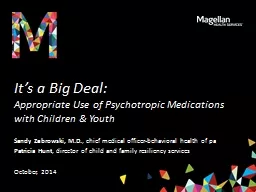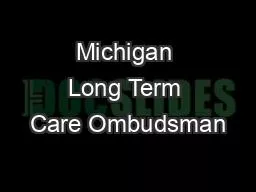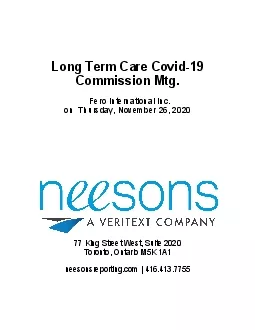PPT-Effective and Appropriate Use of Psychoactive Medications in Long Term Care Residents
Author : tatiana-dople | Published Date : 2020-04-03
Dr Cynthia Hadfield PharmD Director of Pharmacy for Employee LTC amp Retail Pharmacies Lead Clinical Pharmacist Geriatric Specialist Citizens Memorial Healthcare
Presentation Embed Code
Download Presentation
Download Presentation The PPT/PDF document " Effective and Appropriate Use of Psycho..." is the property of its rightful owner. Permission is granted to download and print the materials on this website for personal, non-commercial use only, and to display it on your personal computer provided you do not modify the materials and that you retain all copyright notices contained in the materials. By downloading content from our website, you accept the terms of this agreement.
Effective and Appropriate Use of Psychoactive Medications in Long Term Care Residents: Transcript
Download Rules Of Document
" Effective and Appropriate Use of Psychoactive Medications in Long Term Care Residents"The content belongs to its owner. You may download and print it for personal use, without modification, and keep all copyright notices. By downloading, you agree to these terms.
Related Documents

